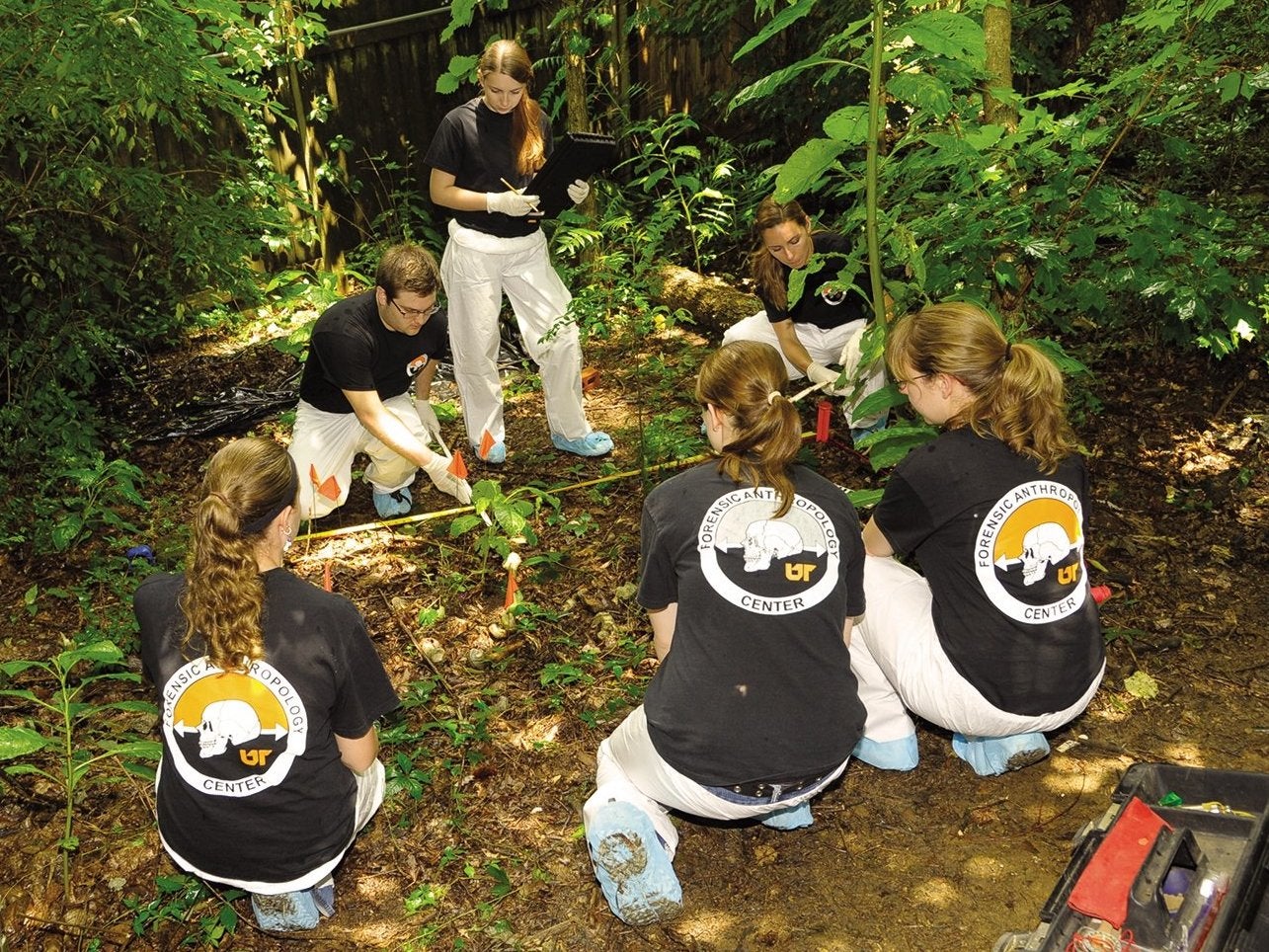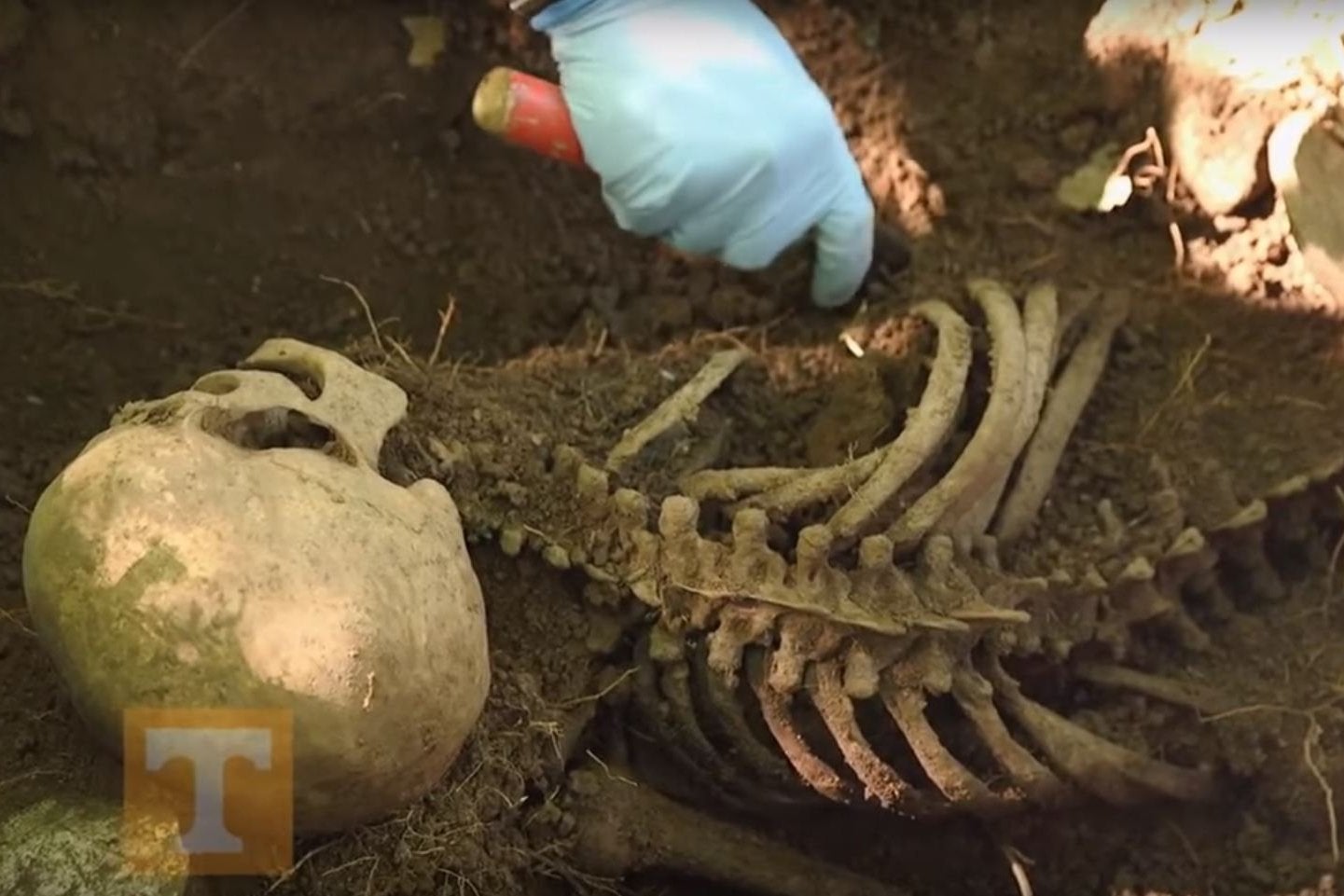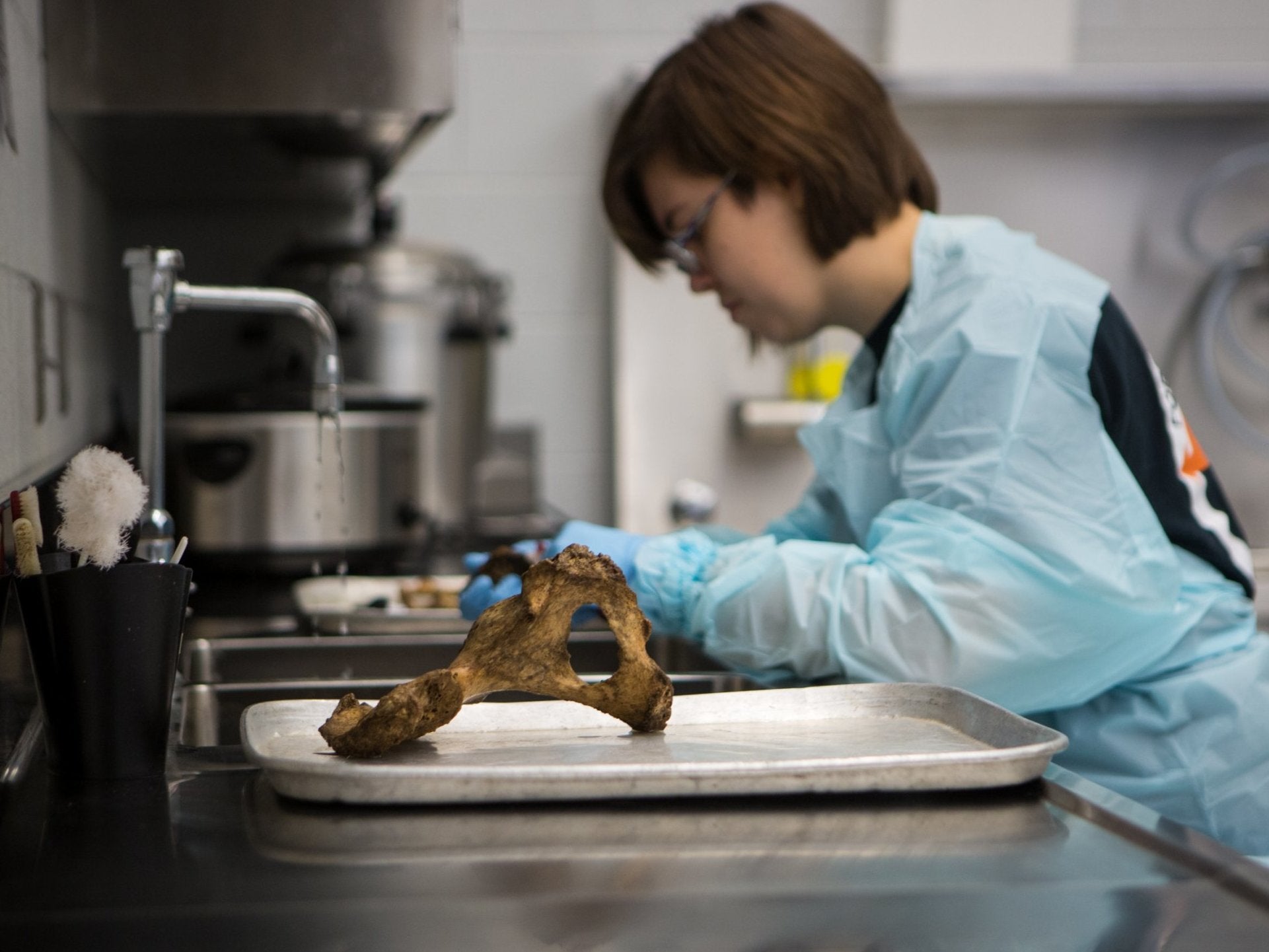The Body Farm: How a university programme gives people a purpose after death
Over 4,000 people have signed up to have their dead body sent to Knoxville, Tennessee, to be used to teach forensic students how to recover human remains, and Fawn Fitter is one of them

Most of us hope to be remembered after death for the ways we contributed to society during our lives. I want to keep contributing even after I’m gone.
The part of me that proudly checks the organ donor box every time I renew my driver’s license has always been offended at the idea of throwing away the rest of a perfectly good human body. The obvious solution of donating myself to a medical school just kicks the can a few months down the road, since a body can be dissected only once. What I really want is to be as useful as possible for as long as possible.
So today, tucked behind the organ donor card in my wallet, I carry another card that indicates I’ve been accepted to a world-renowned criminal justice programme – although by the time I’m ready to attend, I won’t need student orientation. Once I breathe my last, I’ll be shipped to the University of Tennessee in Knoxville to spend my afterlife at the school’s Forensic Anthropology Centre, better known as the Body Farm. There, students and researchers will study my decomposing body to learn how to recover human remains, estimate time since death and piece together who I might have been.
In other words, after I die, I’m going to solve crimes.
Fewer than a dozen sites around the world are devoted to the science of gathering and making sense of human remains. The Body Farm was the first. Established in 1981, with a plot of land just large enough for a single body, it’s now just under three acres, large enough for 150 to 200 people at any given time to decompose in a variety of scenarios that could provide endless material for future seasons of CSI.
They’re buried in shallow graves and floated in a pool, laid out in the back seat of a car and on a carpet in a shed and on the leaves beneath a tree, clothed and nude and covered with tarpaulins. Every one is a valuable and valued collection of data points for future forensic scientists and detectives learning to uncover and analyse the details of death.
I first heard of the Body Farm when I wandered into an art gallery and was transfixed by an ethereal yet bracing black and white image of an anonymous body in an advanced state of decay. I took a snapshot of the label, which identified it as part of photographer Sally Mann’s What Remains series, shot at the Forensic Anthropology Centre in 2006. Months later, I looked up the centre and discovered it had a body donation programme.
The Body Farm doesn’t solicit body donations, its director, Dawnie Wolfe Steadman, tells me, because it doesn’t need to. The staff participates in documentaries and gives presentations to educate the public about what it does and why it matters. People who are interested get in touch because they like the idea of their bodies being used to help the criminal justice system.
“Some people are teachers who want to keep teaching after they’re gone, some people want to be useful forever and ever, some people have known a crime victim,” Steadman says. “There are all sorts of reasons for donation, one for every person, and we’re grateful for all of them.”
The centre does its best to accommodate the families of people who haven’t preregistered as donors, but submitting the detailed donation application is the best way to ensure a plot on the Body Farm. The process reminded me of applying to colleges – except that my alma mater didn’t ask about my height and weight, medical and dental history, shoe size or scars and tattoos, never mind my childhood socioeconomic status and every place I’d ever lived for more than a year.

Unlike colleges, the Body Farm isn’t looking for specific qualities in its applicants. “We can’t control when donors pass away and come to us, so it’s not practical to look for donors who fit a certain demographic,” Steadman points out. Instead, when donors arrive, about 100 times a year, they’re matched to current projects.
Also unlike colleges, the Body Farm doesn’t encourage visits. It’s closed to the public, surrounded by a fence topped with barbed wire and hung with signs that are deliberately ambiguous about what lies within. That is mostly meant to keep gawkers and pranksters away, but it also helps ensure that a donor’s family member doesn’t catch a distressing glimpse of a loved one’s progress from corpse to skeleton – like puberty, an awkward, unattractive transition most people would prefer not to be remembered by.
Nonetheless, I’ve managed to glean a notion of what lies beyond the fence, because the Body Farm’s donor paperwork also includes a photography release. That’s how Mann came to shoot there, how National Geographic filmed a documentary there, and how you can look up news videos showing jawless skulls resting artfully on foliage as a voiceover explains how detectives investigate murders.

You can even watch an episode of the 2008 BBC documentary Stephen Fry in America, in which the actor and author tours the facility and flinches at the smell of a body folded into a trash bin. Yet minutes later, equilibrium restored, he declares the Body Farm a fundamentally optimistic place because it’s used “for extraordinarily good purposes”. He might like to leave his own body to the Body Farm, Fry concludes, as a way to do more good in death than he did in life.
So far, 1,800 people who shared that sentiment have ended up there; another 4,000, including me, have arranged to join them eventually. It’s a comforting thought – not because I’m in any hurry, but because I like knowing what to expect. Barring certain highly infectious diseases or an accident from which I can’t be recovered, my post-mortem destination is booked.
When it’s time for me to head to Knoxville, I’ve instructed my loved ones to dress me in a favourite T-shirt quoting a Frank Turner song: “Not Dead Yet”. I don’t have a spouse or children to object, and I hope that will amuse the Body Farm’s staff members as they match me to my paperwork, confirm that I have no preferences about my disposition (some donors specify that they want to be placed face up, or clothed, or not in water), and cart me out to wherever they need me to be.
In the first part of my afterlife, my most frequent visitors will be beasts, birds and bugs. The only humans to see me will be students and researchers. If I’m exposed to the elements in the heat of summer, this stage could take a few months; if I become part of a longer experiment, like one measuring and identifying the gases a buried body emits over time, I might be “in the field” for years.
Still, after an average of six months to two years, I’ll be reduced to bones. At that point, my remains will move indoors to the WM Bass Donated Skeletal Collection, a permanent, curated collection representing a cross section of Americans of many ages, ethnicities and walks of life.

This promotion comes with more privacy: an acid-free archival box in a climate-controlled storage facility named after the Body Farm’s founder. There I’ll stay forevermore, cared for like a rare book or a stack of historic documents, in a library where students can check out my disarticulated bones, study me, then return me to the shelf for the next scholar.
But the part I contemplate with a smile is that once I’ve entered the permanent holdings, the Forensic Anthropology Centre will let my loved ones check me out, too. I don’t really expect them to, but if they do, I picture them spreading me across a tabletop and reassembling me like a jigsaw puzzle. I imagine them asking how I’ve helped to solve murders, identify missing people or exonerate the wrongly accused.
And then I hope they return me to the shelf with the satisfying sense that even though I’m long gone, there are still plenty of stories I can tell.
© New York Times
Join our commenting forum
Join thought-provoking conversations, follow other Independent readers and see their replies
Comments